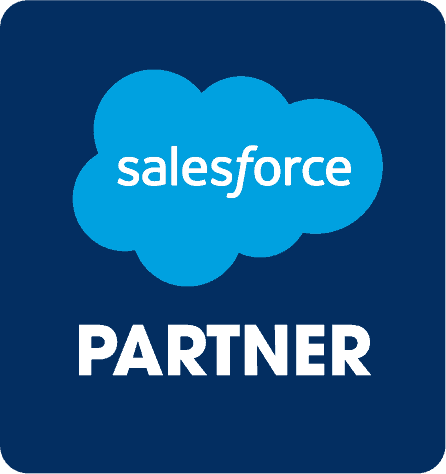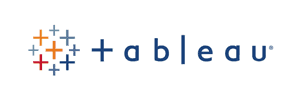Choosing Your Salesforce BI Tool
Power BI and Tableau for Salesforce
There are many BI tools out there that can help expand your reporting and data analysis capabilities in Salesforce. In this article, we’ll focus on two, Power BI and Tableau, and how they compare.
If you are a Salesforce customer wanting to expand your reporting capabilities, you probably are looking to integrate an external business intelligence tool. Two of the top BI tools on the market today are Power BI and, Salesforce’s own, Tableau. But which one is more suitable for your business needs?
Here is my detailed comparison between the two leading BI tools to help you understand the pros and cons of both.
Benefits of Power BI and Tableau
Power BI and Tableau are very intuitive tools with easy to build dashboards and many great, self-service BI features that cater to a wide variety of developers and analysts. Both have a wonderful list of connectors and visuals, easy to embed dashboards, application integration with rest-API support, and a great community with lots of free training resources.
Disadvantages of Power BI and Tableau
Though each tool comes with a ton of features, given they are very self-service focused, governance is a big challenge. It’s very easy to create a siloed culture in your company with pockets of BI teams not fully collaborating. Both tools are working on addressing some of the issues around governance and I am very much looking forward to the new features.
Benefits of Power BI
Power BI is relatively a new player but is growing quickly and adding new features frequently, making it still a great pick for an enterprise Salesforce BI tool. Power BI comes primarily as three versions:
It is primarily a cloud-based BI tool, hence it is easy to deploy with minimal administration and doesn’t require server upgrade projects. Upgrades/features are added automatically on a monthly basis, you just need to update the Power BI Desktop client.
With Power BI, it is also very easy to integrate with Azure and other Microsoft suite applications or products (including Power Automate for RPA and dataflows on Azure Data Lake for data centralization). Overall, this tool has great performance when using cloud data sources and applications.
Disadvantages of Power BI
Power BI has many great features, but there are some areas that it needs to improve in, such as:
Benefits of Tableau
Tableau is a more mature BI tool than Power BI, has nice visuals, and dashboard development is easy. Unlike Power BI, Tableau has much more flexibility in the color palette selections and other dashboard design capabilities that enable developers to achieve better-looking dashboards.
Given Salesforce owns Tableau, I am looking forward to the evolution of the relationship between the platforms. The latest release of Tableau includes integration with Salesforce’s Einstein Analytics into Tableau, though a limited feature at this time, it has great potential and can elevate Tableau as a Salesforce BI tool.
Disadvantages of Tableau
Tableau provides a cloud-based offering but has significant limitations around data source connectivity and authentication. As a result, it has a way to go before it is enterprise-ready. This is why most companies primarily opt for the on-premise installation, which adds to server administration and periodic upgrade projects to use the newly released features.
More Comparisons in Key Areas
Cost
| Power BI | Tableau |
|---|---|
| Relatively less expensive with options between pro and premium. | Being a per-user cost model can be more expensive to implement at an enterprise-level. |
Data Preparation
| Power BI | Tableau |
|---|---|
| Comes with data wrangling tool, Power Query. | Tableau Prep tool is used for data preparation. |
| Power Query (uses M query) is a no-code based advanced data preparation tool. | Tableau Prep comes with the data flows capability (no-code) to do advanced data preparation. |
| Incremental refresh capabilities. | Incremental refresh of extracts is a feature expected in the near future. |
| M query code can be reused between Power BI and Azure Analytics Services. | Ability to write back prepped data from Tableau Prep to a table in the database. |
| DAX language comes with an elastic library of functions which enables users to create calculations within a report. | Has an easy to learn language for creating calculations and functions in workbooks. New functions are regularly added with each update. |
Adhoc Reporting
| Power BI | Tableau |
|---|---|
| Ability to create a semantic model in Azure Analysis Services or Power BI for your adhoc users to use. You can even connect Tableau to the semantic model created in Power BI. | None |
| Can create certified data sources/datasets. | Can create certified data sources/datasets. |
| Display recommended data sources/tables. | Display recommended data sources/tables. |
| Better excel integration enables Analyze with Excel by connecting to the semantic model built in Azure Analysis Services. | Export to Excel and PowerPoint features are to come in the near future. |
| Power Query code and data flows can be reused between multiple dashboards. Data curators can assist users in prepping data faster. | Enriched datasets help data curators deploy analytical models in Tableau Prep that Business Analysts can use. |
| Lineage view feature on Power BI provides for better end-user visibility into the sources, refresh schedule, etc. | Upcoming data lineage feature will help end-users to be more informed of the data sources and refresh details. |
Data Discovery and Visualization
| Power BI | Tableau |
|---|---|
| Natural Language Process (NLP) based questions feature enables users to get quick answers from their data. | Natural Language Process (NLP) based questions feature is expected in the near future. |
| View Insights feature, an AI Semantic Model-based outlier detector, can be used to get quick insights from your data. | None |
Access Control and Data Security
| Power BI | Tableau |
|---|---|
| Access control is easy to manage given Active Directory integration comes out-of-the-box. | Content level security can be managed easily through the Tableau Server. Active Directory-based authentication needs to be configured. |
| Static and dynamic row-level security (RLS) can be defined with filters on roles and use on any report. | Static and dynamic row-level security can be applied to individual workbooks. In the upcoming release, it will be able to be applied to data sources through Tableau Server. |
Salesforce Specific
| Power BI | Tableau |
|---|---|
| Comes with connectors for both Salesforce objects/tables as well as Salesforce reports. | Content level security can be managed easily through the Tableau Server. Active Directory-based authentication needs to be configured. |
| Much faster to build reports/dashboards based on Salesforce as a source. | Static and dynamic row-level security can be applied to individual workbooks. In the upcoming release, it will be able to be applied to data sources through Tableau Server. |
| Comes with pre-built content (out-of-the-box reports/dashboards) and an app for Salesforce specific data analysis. | Tableau’s latest release includes integration to Einstein Analytics that enable quick out-of-the-box forecasting and advanced analytics capabilities. |
Mobile Capabilities
| Power BI | Tableau |
|---|---|
| Power Apps Ecosystem integrates with Power Apps (custom build apps) and Power Automate (RPA) | Tableau Metrics feature, expected in near future, is a convenient feature that gives users a quick snapshot of the metrics they are most interested in. |
| Comes with geolocation filtering, barcode filtering, etc. | Need to use java scripting for some capabilities like geolocation aware dashboards |
| Device adaptive resolution | Device adaptive resolution |
Advanced Analytics / Data Science
| Power BI | Tableau |
|---|---|
| AI-powered analytics is currently available with advanced AI/ML capabilities. | AI-powered analytics expected in near future with Einstein Analytics integration. |
| Auto ML feature can be used by analysts to build AI/ML models in Power BI and to use on dashboards. | Ability to build models in Einstein and deploy them within Tableau. Requires no code and easy to learn without needing a background in data science. Models can be applied to all data in the dashboards, not just Salesforce data, to allow for predictive and prescriptive analytics. Highly anticipated feature in the near future. |
| View Insights feature, an AI Semantic Model-based outlier detector, can be used to get quick insights from your data. | Can build specific visualizations to clearly display insights. |
| Analyze feature can be used to get automatic explanation of fluctuations in trends. | Einstein Analytics can provide easy answers to what-if questions. |
| Natural Language Process (NLP) based questions feature enables user to get quick answers from their data. | Natural Language Process (NLP) based questions feature is expected in the near future. |
| Easy integration with Azure ML. | Data can be shared from Snowflake to Einstein, allowing for developers to create models with data in their Snowflake CDW. |
Real-Time Streaming Analytics
| Power BI | Tableau |
|---|---|
| Can create dashboards to display real-time streaming data. Streaming data can be sensor data, stock market, social media sources, etc. | Tableau is not ideal for streaming data analytics but with the anticipated incremental data refresh feature, we could build dashboards that are near real-time. |
The Choice is Yours
With the current features in Power BI and Tableau, you can’t go wrong with either of them as your Salesforce BI tool to report on your Salesforce data. If you’re already an existing Power BI customer or your ecosystem includes Azure and/or Microsoft applications now or in the future, Power BI is a great choice. The upcoming integration of Tableau and Einstein Analytics will provide Tableau with many new features comparable to Power BI, as discussed above. This can make Tableau a great pick for someone interested in procuring a new BI tool that already has a close integration with Salesforce.
Looking for more on Data & Analytics?
Explore more insights and expertise at smartbridge.com/data
There’s more to explore at Smartbridge.com!
Sign up to be notified when we publish articles, news, videos and more!
Other ways to
follow us:





